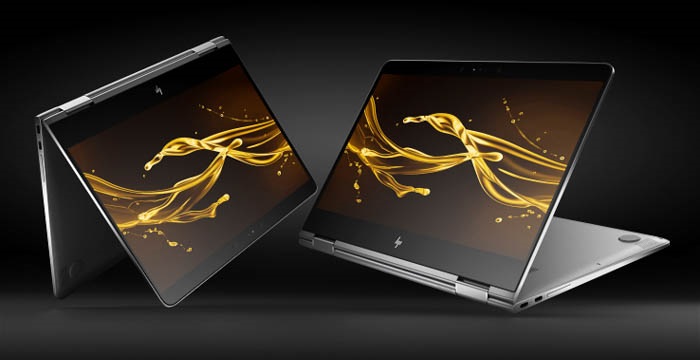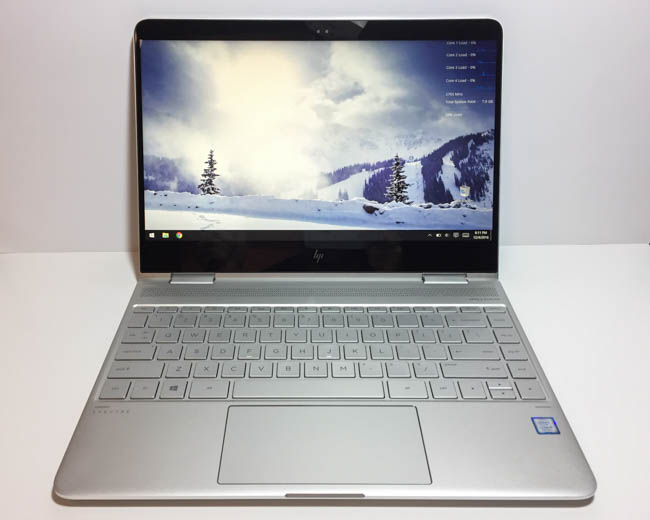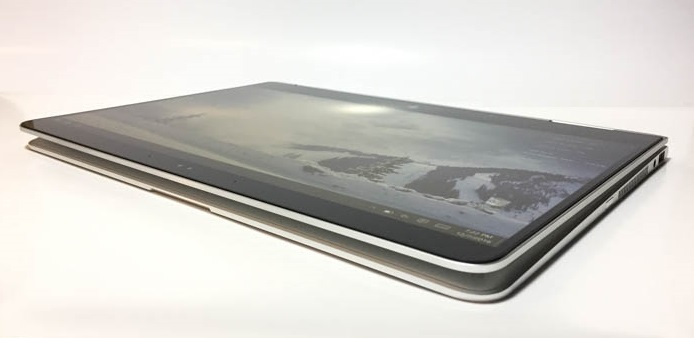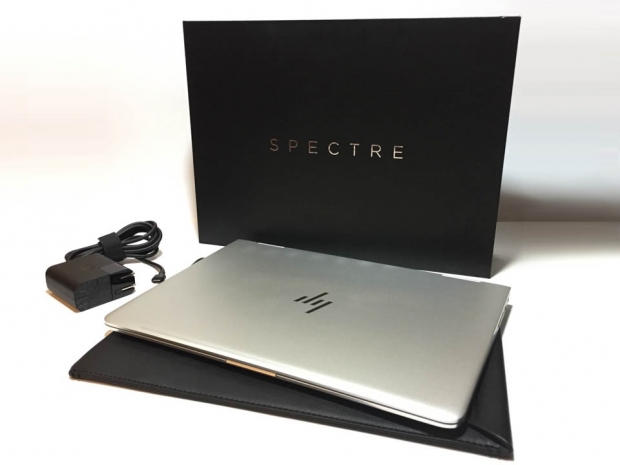Index
A 2-in-1 design win in the sub 3-pound category
In March 2015, HP announced a new 2-in-1 convertible product called the Spectre x360, with an ultra-thin design measuring just 15.9 millimeters and a CNC-machined aluminum chassis weighing 3.3 pounds.
Just over a year and a half later, the company has now introduced the second generation of its Spectre x360 refresh in both 13.3-inch and 15.6-inch versions. The smaller laptop covered in this review features a near borderless, micro-edge display, Intel’s 7th-generation Kaby Lake processor in a 15W TDP, and a design that is 13 percent thinner and 11 percent lighter than the original.
HP originally announced the Spectre x360 in a press release last spring, and it mentioned during a Microsoft Build developer conference the following month that the convertible had been designed in close collaboration with engineers from the Windows team, who helped inspire many of the small details from screen color gamut to fan noise, BIOS options and even wireless range. The result at the time was a reasonably priced ($1199), convertible notebook with long battery life that draws some similarities from the simplicity Apple’s unibody MacBook Air and the versatility of Lenovo’s Yoga series lineups. While the first product still retained a distinct HP product look, the product was still offered a bit denser than the competition despite its relatively simple, attractive and sleek design.
The second-generation refresh now measures 13.8mm thick, while the weight drops down to a more versatile 2.85 pounds. The width of the device has also been reduced from 12.79 inches (32.5cm) to 12.03 inches (30.6cm) as the company discovered a way to eliminate almost 10mm from each side of the display with a new micro-bezel design.
There is now just 5.45mm of space on each side of the screen compared to the previous 15.1mm bezel, accompanied by a much wider keyboard featuring about the same amount of clearance on each side of the aluminum body. On one hand, the advantage here is that there is now an extra column of keys on the right hand side that does not require using “Fn” key combinations. On the other hand, the 13 percent thinner design now appears to be more reminiscent of a compact netbook, though the modifications seem to be more of an afterthought rather than an original design intention.
Overall, the device as a whole still remains quite sleek, stylish and minimal thanks to the unibody design, yet still unique compared to Apple’s MacBook Air and Pro lineup, while remaining thinner than the Lenovo Yoga 710 and 910.




